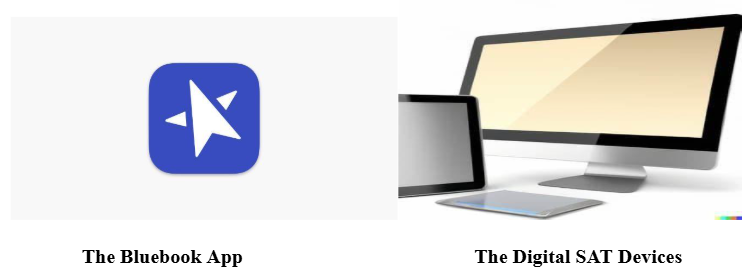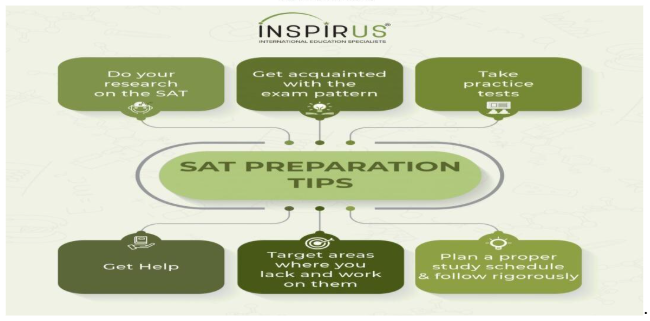Blogs
The Ultimate Top 10 Steps for the Digital SAT Prep-2025
By Dr. Mercy
With the SAT entering a fully digital era, preparing for this exam in 2025 requires more than just academic
content mastery. Students must now develop digital fluency, adaptive strategies, and smart time management skills. Whether you’re a student aiming for top universities or a parent supporting that goal, this 10-step guide outlines a comprehensive and modern approach to excelling in the Digital SAT.

1. Start with a Diagnostic Assessment
Every successful journey begins with knowing your starting point. Before diving into SAT prep, students
should take a full-length diagnostic test on a digital platform. This initial test will reveal current strengths and identify weak areas across the Reading, Writing, and Math sections. Analyzing the results helps uncover patterns—perhaps reading comprehension needs a boost, or algebra problems consistently trip you up. This insight forms the foundation for a tailored prep plan.
2. Create a Personalized Study Plan

Once you understand your baseline, the next step is to develop a customized study strategy. Your prep schedule should strike a balance between concept review, skill reinforcement, and regular timed practice. Students should set achievable weekly goals with room to adapt based on progress. For Reading and Writing, focus on improving comprehension skills, understanding grammar mechanics, and learning vocabulary in context. In Math, strengthen problem-solving, algebraic reasoning, and calculator fluency. Targeted drills and personalized instruction are crucial to addressing any lingering weak spots.
3. Get Comfortable with the Digital Testing Format

Familiarity with the Digital SAT’s interface is essential for reducing test-day anxiety and improving
performance. The test is taken through College Board’s Bluebook app on approved devices, including Windows laptops, Macs, iPads, or school-managed Chromebooks. Smartphones are not permitted. The test interface offers tools such as a built-in calculator, highlighter, and answer eliminator. Students should regularly simulate the testing environment by completing timed sections on a digital device, using these tools until they become second nature.
4. Understand the Adaptive Test Structure
The Digital SAT is section-adaptive, which means the difficulty of the questions in the second module is
influenced by performance in the first. Early accuracy can lead to more challenging—but higher-scoring—
questions later in the test. To prepare for this format, students should practice with adaptive tests that replicate the real exam’s structure. This allows them to learn how to manage pacing, stay confident through varying question difficulty, and maintain accuracy under pressure.
5.Take Full-Length Practice Tests—and Reflect
Frequent full-length practice tests are critical for building endurance and applying learned strategies under timed conditions. After each test, students should conduct a thorough review to identify what went wrong: Was it a misunderstanding, a misread question, or a time management issue? This reflection process, guided by a tutor or mentor, enables students to adjust their prep plans and develop smarter approaches to similar problems in the future.
6. Train in Test-Taking Strategy

Digital test success isn’t just about knowing the content—it’s about navigating the platform efficiently and making smart decisions. Students should be trained to flag questions, manage their time wisely, and return to tougher items when needed. Strategic calculator use, smart guessing (there’s no penalty for incorrect answers), and methodical reading are essential. Tutors can help students develop analytical thinking skills that will serve them especially well in reading comprehension and math reasoning tasks.
7. Track Progress and Stay Flexible
Check-ins should occur regularly—weekly or biweekly—to assess what’s working and what needs to change. Prep plans must evolve as the student progresses. Celebrate improvements to keep motivation high and recognize when a topic no longer needs intensive practice. Flexibility is key: sometimes shifting focus or trying a different technique is exactly what a student needs to move forward.
8. Prepare Mentally for Test Day
In the final weeks before the test, the emphasis should shift from learning new content to reinforcing strategies and staying mentally sharp. Students should review key concepts, re-take specific sections for reinforcement, and visualize their test-day routine. Knowing what to bring, what time to arrive, and how to manage test-day nerves can significantly affect performance. Confidence and calmness can be just as important as preparation.
9. Reflect After the Real Exam
After test day, it’s important to evaluate how things went. Students should consider what they felt confident about and where they struggled. If a retake is planned or considered, this reflection helps determine what adjustments need to be made—whether that means more targeted practice, improved pacing, or a renewed focus on digital tools.
10. Use High-Quality Resources
Start your prep with official College Board materials and the Khan Academy SAT platform, which are both free and aligned with the real exam. Supplement these with trusted resources such as Barron’s Digital SAT guide, targeted prep apps, or content-specific practice books. Students can also benefit from structured programs like group bootcamps or one-on-one coaching, which provide accountability, expert insights, and peer motivation.
Final Thoughts

Effective SAT preparation in 2025 requires an approach that is smart, adaptable, and personalized. The best results come from combining data-driven diagnostics, customized study planning, regular digital practice, strategic review, and expert support. With the right tools and mindset, students can rise to the challenge of the Digital SAT and confidently take their next step toward admission to their dream universities.